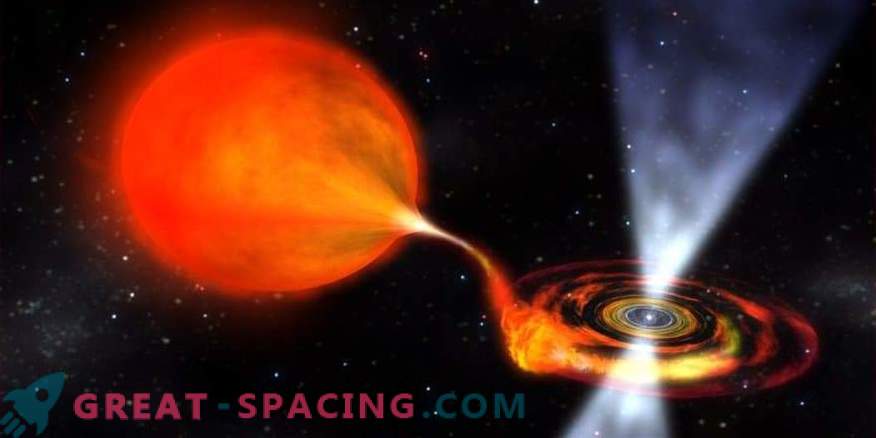
Astronomers believe that stars form an accretion disk around themselves, stealing material from a nearby satellite star.
Researchers use stellar eclipses to explore the atmosphere of accretion disks around compact stars. Representatives of the Netherlands Space Research Institute tested the method on a low-mass X-ray binary star. Thus, it was possible to find a denser atmosphere than previously thought, and to distinguish between two different gas components.
Almost half of the observed systems are represented by binary star systems. These stars hold each other by gravity. A holder of greater gravity steals material from a nearby star and forms an accretion disk.
Now the parameters and geometry of the accretion disks remain a mystery. New models and X-ray observations suggest that the vertical size of the disk is larger than the old theoretical models predict. Above the disc may be extended atmosphere. But how to see it? A suitable X-ray double star should be found with a viewing angle such that the star-neighbor overshadows the bright disk.
The researchers decided to opt for the eclipsing binary system EXO 0748-676 and study it using the XMM-Newton space observatory. Scientists have focused on low-mass stars, since larger objects are endowed with a powerful wind, which is difficult to distinguish from accretionary currents.

When viewed from Earth, it can be seen that the EXO 0748-676 system is tilted at such an angle that the star-neighbor sometimes blocks the primary star and its accretion disk. This allows you to observe the atmosphere of the disc.
Using the eclipse method, it was possible to observe the atmosphere more directly than in previous studies. The data confirms that the atmosphere is denser than predicted, and the gas appears in two different phases. The first component seems to be hot (the temperature is close to that of the lower part of the disk), and the second is colder and smaller in size. Most likely, the second component is represented by a lumpy material created due to the impact of the accretion flow on the disk.
The extended atmosphere could appear due to the fact that the accreting star photoionizes the outer parts of the disk due to the powerful x-ray radiation. This phenomenon leads to thermal instability, while the gas is trying to find a stable solution. This is possible if the disc increases the volume, expanding the atmosphere.











































